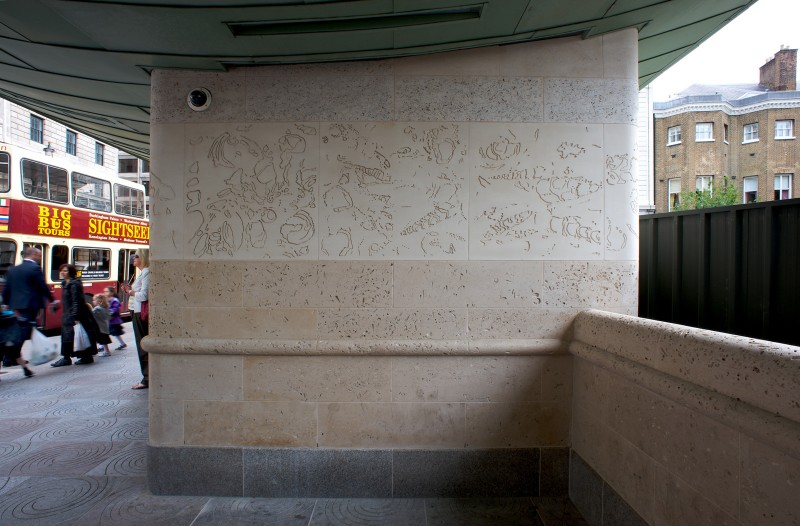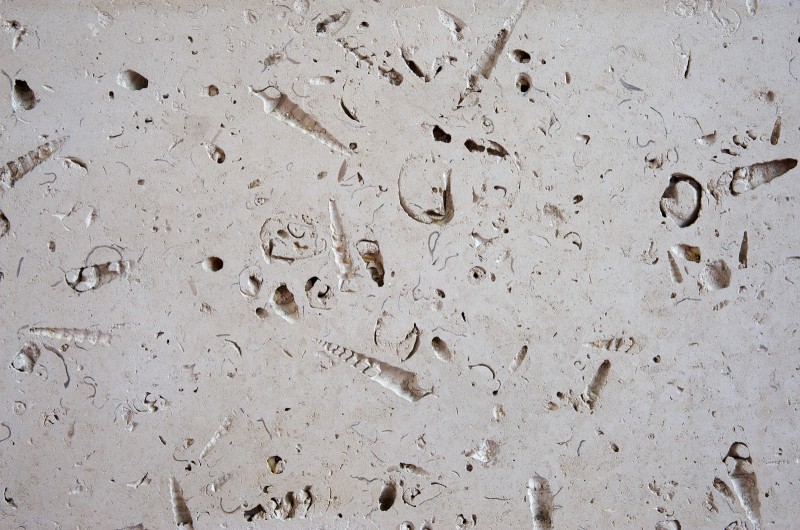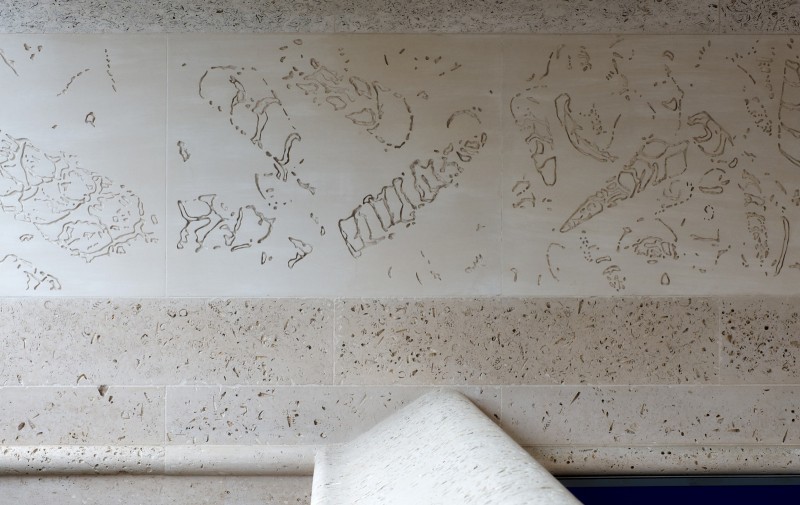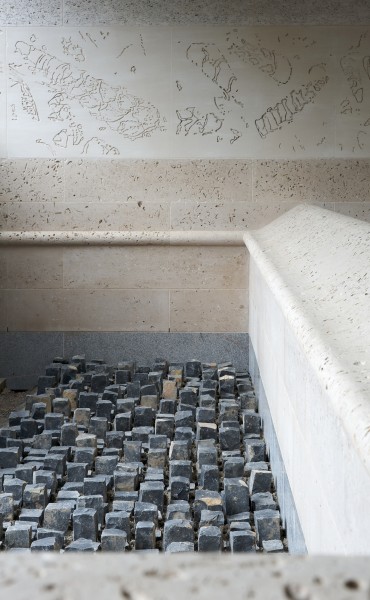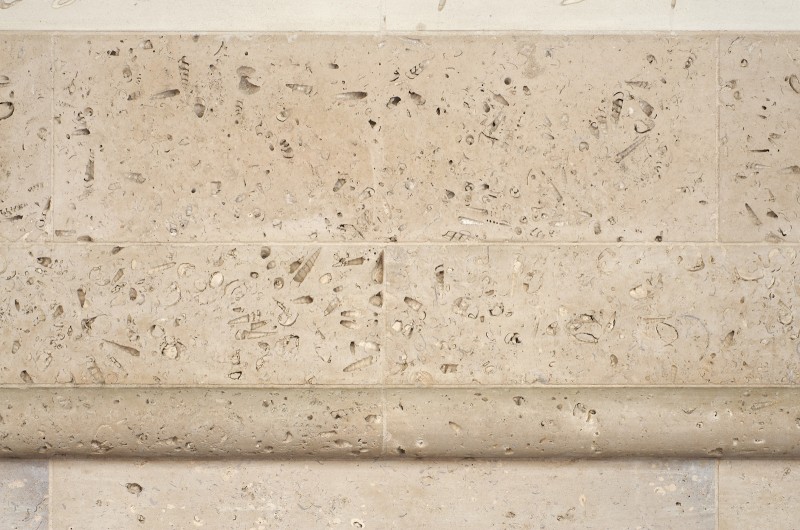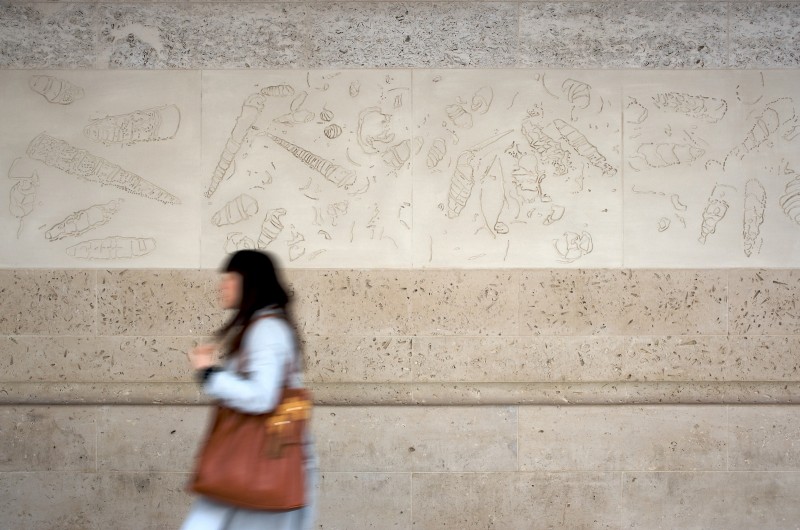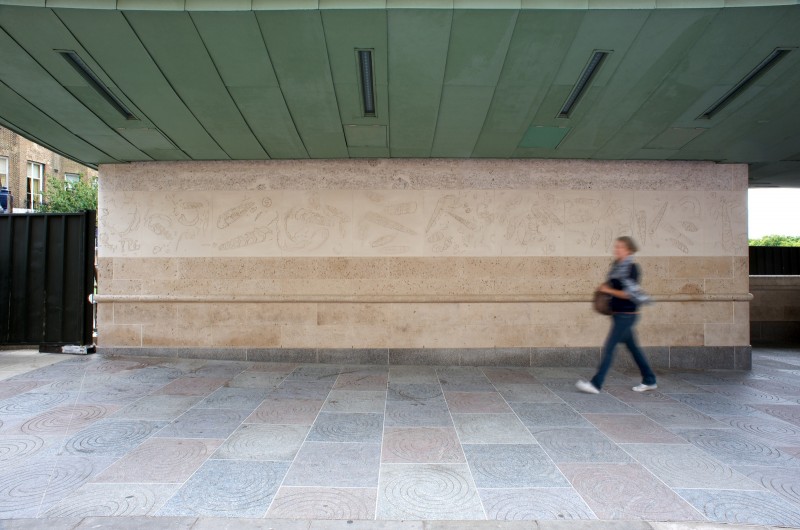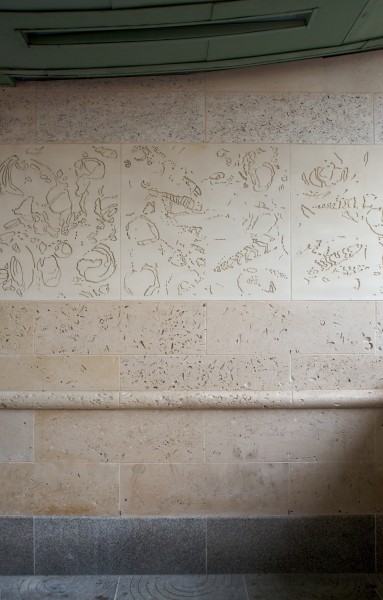John Maine
Sea Strata
Sea Strata is an integral and permanent artwork made for Green Park Underground station. The work was made as a significant element of the improvement and upgrading of the station buildings. John Maine was commissioned by Art on the Underground to develop a unified work for the walls and flooring of all the station buildings above ground.
The concept of John Maine’s work for Green Park station is anchored in the natural world, reflecting the location between the urban character of Piccadilly and the almost rural Green Park beyond.
Green Park Underground station is one of busiest interchange stations on the London Underground system. During major improvements to the station, including step-free access and a new station canopy over an enlarged staircase into the station, Maine’s work was made as an integral part of the other key part of the improvements; the restructured station buildings. There are two related elements of the artwork: the Portland stone cladding of the station buildings with related walls and coping; and the granite pavement, which has been incised with a sequence of spirals.
Portland stone is a limestone that continues to be used for many of London’s buildings, often as a neutral cladding material. By contrast, Maine’s work at Green Park station draws attention to the distinct character of Portland stone, as a layered material in the quarry. He has used the stone to make the station’s anonymous service buildings, with very few doors or other features, relate to the appearance of natural stone outcrops. The cladding is set in bands or layers that continue across all the buildings to suggest the strata of the stone as it sits in the ground at Portland. At eye level, a frieze of drawn shapes derived from enlarged Portland fossils has been incised into the stone. Below this, a band of Roach stone incorporates a drip course moulding that coincides with the carved coping of the low walls throughout.
Maine’s description of the project allows further insight to his concept:
I wanted to use the Portland stone of the walls to explore the natural composition of the rock and to draw out the internal structure of the material, revealing the fossil remains of marine creatures from 150 million years ago. I imagined the four small buildings as outcrops with strata linking across from one to another. By rounding the corners of the buildings, they take on a more solid feel, and the various bands wrapping around the walls emphasize the natural layers, which you would find in a Portland quarry.
About the artist
John Maine is best known for making large outdoor sculpture in stone that relates to the surrounding landscape. His work utilises simple forms such as rings, columns and cones as well as an element of drawing.
John Maine studied at the West of England College of Art from 1960 to 1964 before moving to London to attend the Royal College of Art for a further three years until 1967. After graduating, he became the first fellow at Gloucestershire College of Art, a two-year appointment. He then set up a sculpture studio in Shoreditch, London, and travelled widely. Influences from these journeys (especially to Mexico) strongly affected his work. He was awarded the first fellowship at the Yorkshire Sculpture Park, where he developed these ideas over two years from 1979 to 1980.
He subsequently worked in Carrara and attended the Hagi Symposium in Japan, which stimulated a lasting interest in Japanese culture. Commissioned by the Government Art Collection, he spent a year in Australia carving a granite work for the British High Commission, Canberra. Returning to London, he worked in situ to carve Arena on the South Bank outside the National Theatre. This practice of creating large works in landscape was developed further in Portland, Dorset, where he made the Chiswell Earthworks, as part of the Common Ground New Milestones Project.
Commissioned by Art on the Underground

